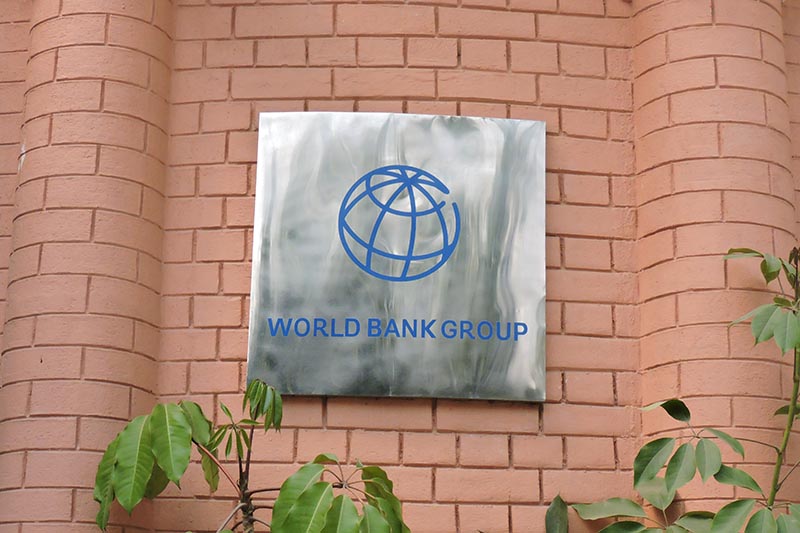WB maintains Nepal's growth forecast at 4.6pc
Kathmandu, April 16
The World Bank Group has kept the growth outlook for Nepal unchanged from its initial projection in September at 4.6 per cent, which is relatively low compared to South Asian average growth projection of 5.26 per cent in 2018.
Unveiling its bi-annual South Asia Economic Focus (SAEF), the World Bank has projected that Nepal's growth with further drop over the next two fiscals - to 4.5 per cent in 2019 and to 4.2 per cent in 2020.
The World Bank's projection for this year is significantly lower than the government's revised growth target of six per cent from earlier target of 7.2 per cent. Other multilateral development agencies have also revised their initial growth projection after the government unveiled the data of paddy production at 5.1 million tonnes, which was 1.5 percentage points lower than the previous year. While making its initial growth projection in September last year, World Bank Group had said around one percentage point could be dropped due to the damages caused by the floods.
Contrary to the World Bank, the Asian Development Bank (ADB) had revised up its growth projection to 4.9 per cent for this fiscal compared to its initial projection of 4.7 per cent. The World Bank's projection is lowest among the projections made by multilateral development agencies. The International Monetary Fund (IMF) has forecast the country's economic growth will stand at five per cent in this fiscal.
Nepal has seen an economic recovery after disruptions from earthquakes and a trade blockade, but growth is expected to slow to 4.6 percent in 2018 due to the heaviest floods in decades combined with slow recovery of exports, slowdown in remittances, and an increase in lending rates, according to the SAEF. Though the country's economy had rebounded strongly in the last fiscal and is expected to grow modestly in this fiscal and coming years, the World Bank has flagged lack of positive correlation between growth and job creation in the economy.
Nepal has been facing the challenge of ‘jobless growth' similar to other economies in the region, according to the SAEF. “Every month, the working-age population goes up by 35,000 individuals and Nepal must create 240,000 jobs a year to maintain its employment rate.”
The SAEF has said that the South Asia is the fastest growing economy in the world, but has flagged less job opportunities in the region. According to the SAEF, India and Bangladesh are rapidly growing economies in South Asia, followed by Pakistan, Maldives and Nepal.
South Asia's overall economic growth performance is lifted by India as the economy of the southern neighbour is expected to grow by 7.3 per cent in 2018 and continuously 7.5 per cent for next two consecutive fiscal years, according to SAEF.
While the number of working-age people is increasing, the employment rate has declined in most countries in South Asia based on employment data analysed from 2005 to 2015, as per the report. “The fall in employment rates in South Asia has been much faster than in East Asia and it has been particularly strong in India, Bhutan and Sri Lanka, especially for women. With declining employment rates, the region is foregoing some of its potential demographic dividend.”
The report has underscored the need for creating job opportunities to reap benefits of huge working-age population. “To arrest further declines in employment rates, South Asian countries would need to create 11.7 million jobs a year, which is feasible if the current growth momentum of the region is sustained,” said SAEF.






